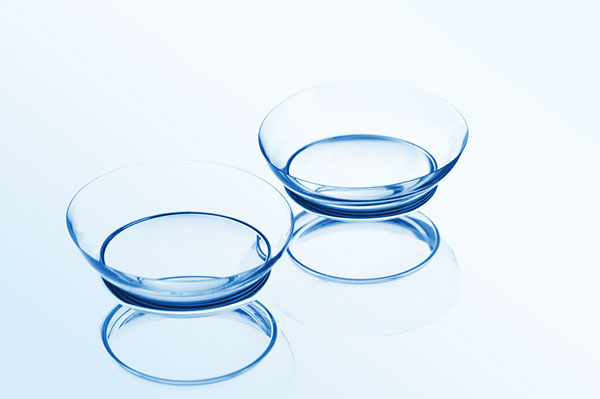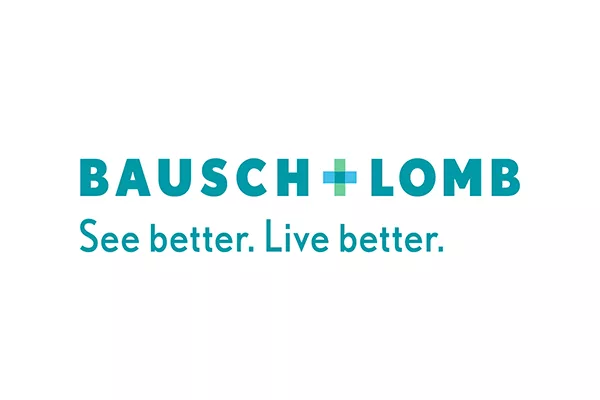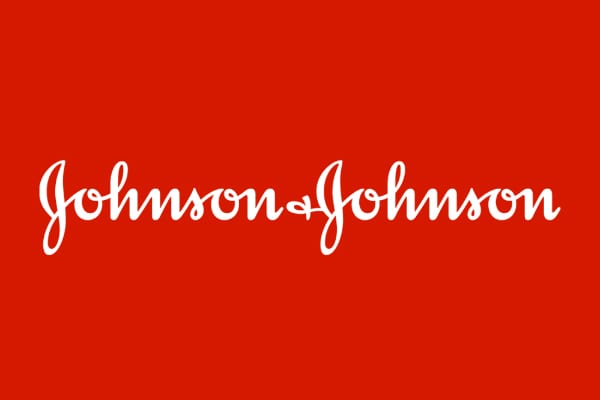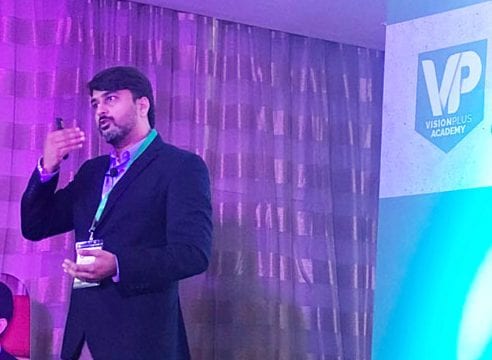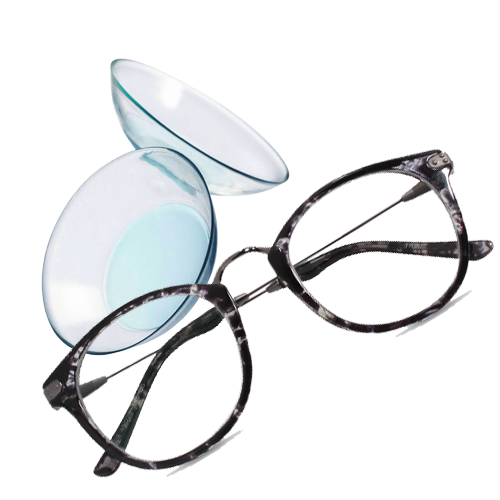Understanding the different aspects of contact lens usage can go a long way in ensuring conversion and retention of contact lens users.
 Contact lens dispensing has been an area where there’s a constant debate about which is the right way to do it and different schools of thought about the profitability factor. However it’s quite clear now that the fact that it’s a repeated purchase makes it a lot more profitable in the long run. However the challenges remain about methods to ensure patient retention for the subsequent purchases.
Contact lens dispensing has been an area where there’s a constant debate about which is the right way to do it and different schools of thought about the profitability factor. However it’s quite clear now that the fact that it’s a repeated purchase makes it a lot more profitable in the long run. However the challenges remain about methods to ensure patient retention for the subsequent purchases.
Although that’s a practice management topic that we could cover sometime in the future, for the current article the topic is mainly about understanding the different aspects of contact lenses dispensing.
So let’s start with the basics of what does an ECP have to keep in mind while recommending contact lenses.
Broadly it depends on two main criterias ie whether the wearer is a new user of contact lenses or whether the wearer is an existing user of contact lenses.
For a new user, it’s important to ensure that the patient is free from the fear factor of wearing contact lenses. And for this there are 3 important things for an ECP to watch out for.
Comfort : This could refer to visual and physical comfort. And this is the most important factor in ensuring the the patient is converted to a long term user or not.
Health : A proper assessment of the patients to ensure he or she is the right candidate for contact lens wear is very critical. Once this assessment has been made then a recommendation regarding the type and the modality can be made.
Hygiene : Hygiene includes insertion and removal of the lenses and the lens case care. This too, is a very important part as this is what leads to most dropouts and is critical in preventing dropouts.
Frequency Of Eye Examinations
Every person who wears contact lenses should ideally get his or her eyes checked and examined by a professional every six to eight months. So most people who go in for quarterly refills should get their vision examined every two visits. Most ECPs don’t seem to emphasize on re-evaluation of vision of a patient who comes in for a refill. Most patients too don’t insist as they are not really aware of this. They might think everything is fine and they just need a refill. But sometimes the prescription may have gone higher and they may not have noticed it.
The ECP needs to be more proactive in getting this re-evaluation but at the same time, the patient too, as they are the ones who are wearing it, should be encouraged to make it a point to ask for a re-evaluation during every visit.
Modalities – Which Ones To Dispense?
Dailies are the healthier option. Dailies or single use contact lenses are a great option for those who can afford it. It also offers the convenience of occasional wear. It’s less prone to infection and it offers the best of both worlds ie daily wear as well as occasional wear. It definitely has advantages over the reusable category. Regarding the other modalities, it’s a very lifestyle oriented option.
For those patients who are more compliant in terms of hygiene in contact lens wear, the frequent replacement lenses are a great option. They are more economically priced than the dailies and have proven to be very convenient and effective.
There are those who travel frequently and require the benefits of extended wear where they may need to sleep with the contact lenses. This lifestyle needs a choice and it’s available. Even with extended wear could be overnight wear or daily wear as the wearer chooses to use it. A product like Acuvue Oasys has been approved by FDA for use as extended wear while it can also be used as a reusable category.
With extended wear, one can wear it continuously over an ascertained period (even sleep with it for this period) and then they will need to remove it and discard it. While the same lenses can be used as a reusable lenses, one which is removed and stored in a lens case with solution every night. If used like a reusable lens the period for use is generally longer, based on the product.
A lot of ECPs don’t recommend overnight usage with extended wear lenses unless it’s a necessity. And in the Middle East, with the low level of patient compliance and the environmental conditions, it makes overnight usage an even more difficult choice.
The main reason for contact lens drop-outs is generally attributed to patient non-compliance ie not adhering to the requirements of contact lens usage. And this is a major hurdle in the growth of the contact lens market.
To ensure compliance from the patients, ECPs need to re-emphasize on the messaging about the health and hygiene aspect. Contact lens cleaning, lens case care and frequent follow ups should be encouraged.
Contact lens cleaning involves a lot of rinsing and rubbing. At the same time if it’s a re-usable lens there’s as much importance to be given to lens case care. And also the right ways to use the solutions for contact lenses. It’s critical that this messaging to the patient happens everytime he or she visits the clinic. Recent studies have indicated that practitioners need practice strategies to emphasize and re-emphasize on care and maintenance. Even if the patient is an experienced wearer the messaging should still be as strong. Every user may forget a few small things and it’s important and helpful to be constantly reminded about the compliance aspect. And hearing it from a professional always helps.
The wearers should be encouraged to ensure proper follow up with the eye care practitioner and stick to the care and regimen that has been prescribed. Whenever in doubt, they should be advised to get back to the practitioner to clarify their doubts.
There are some basic rules that need to be emphasized
Hand Hygiene : Maintaining hand hygiene before inserting and after removing the lense.
Lens case hygiene : If not once in a month, then at least quarterly the lens cases must be replaced.
Solutions usage : A 360 ml bottle of solutions should not last for more than 3 months. If it does then it means the user is not using enough to clean, rinse and replace the solution in the lens case. The lens case has to have a fresh supply of solution every day. No top ups should be done. as it loses its efficacy and this results in the development of bio film.
Even in solutions it’s better to use bottles of smaller volumes as this would encourage the patient to visit the ECP more often. ECPs are advised to provided a 3 months supply to a maximum of 6 months supply to ensure that the patients revisit the clinic frequently.
With these basic guidelines in place, contact lens wear can be a very healthy option for those who need it. And as for the practitioner, the secret to a successful practice and happy patients is to remember that shorter modalities are a better option as fresher lenses are always better.
Key Material Properties Of A Contact Lens That Ensure Comfort
Modulus : This refers to the flexibility of the material. If the material is not flexible enough you will not be comfortable enough.
Lubricity : The contact lens surface has to be smooth enough. Each time that the eyelid glides over the contact lens there should be no friction ensuring more comfort.
Oxygen Flux : While the contact lens is worn the material should ensure 100% oxygen delivery. When one is not wearing lenses 75% of the oxygen available to the eye is through the atmosphere. So when one wears a contact lens the material should be such that this oxygen deliverability is maintained.
Wettability : The contact lens has to be wet enough so that the tear film can spread evenly over it. This is very critical in ensuring end-of-day comfort.
– (With inputs from Dr Pragatti Kadve, Professional Affairs Consultant at Johnson & Johnson Vision Care, and ACUVUE® Brand Contact Lenses)
